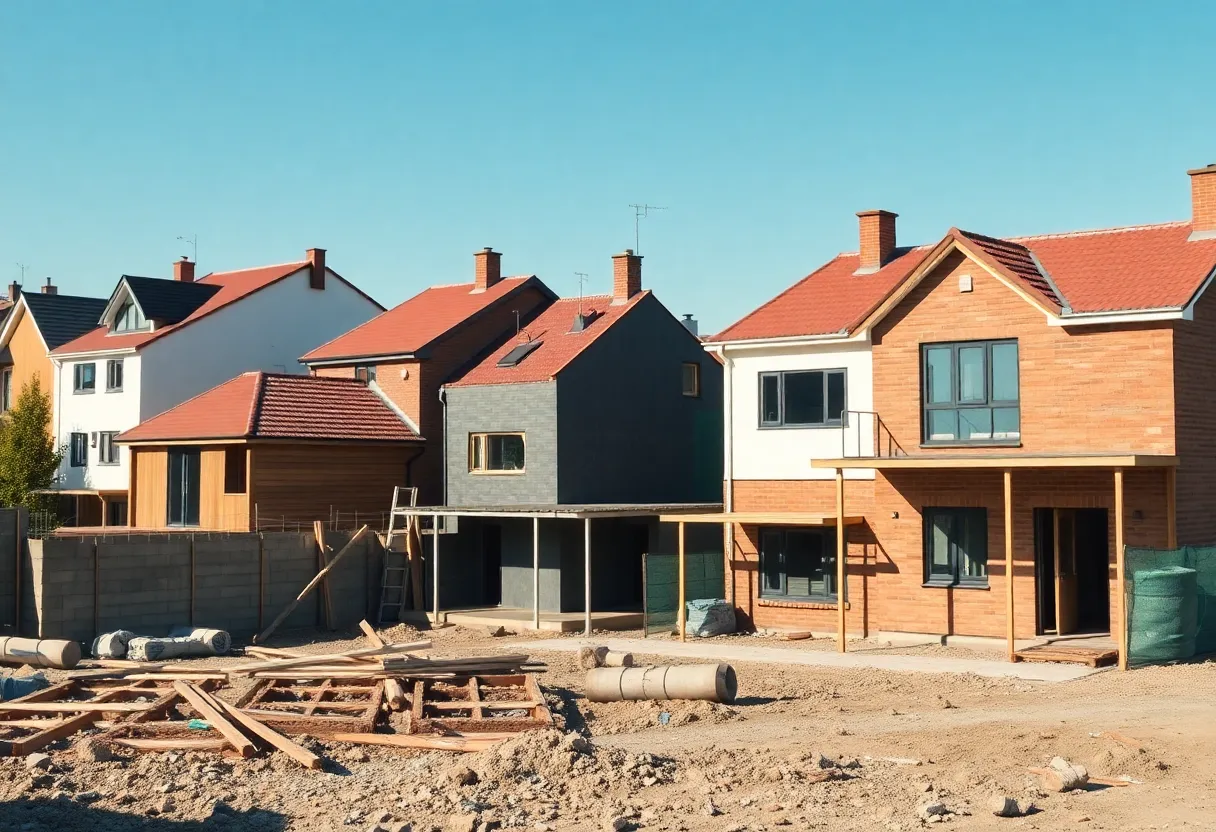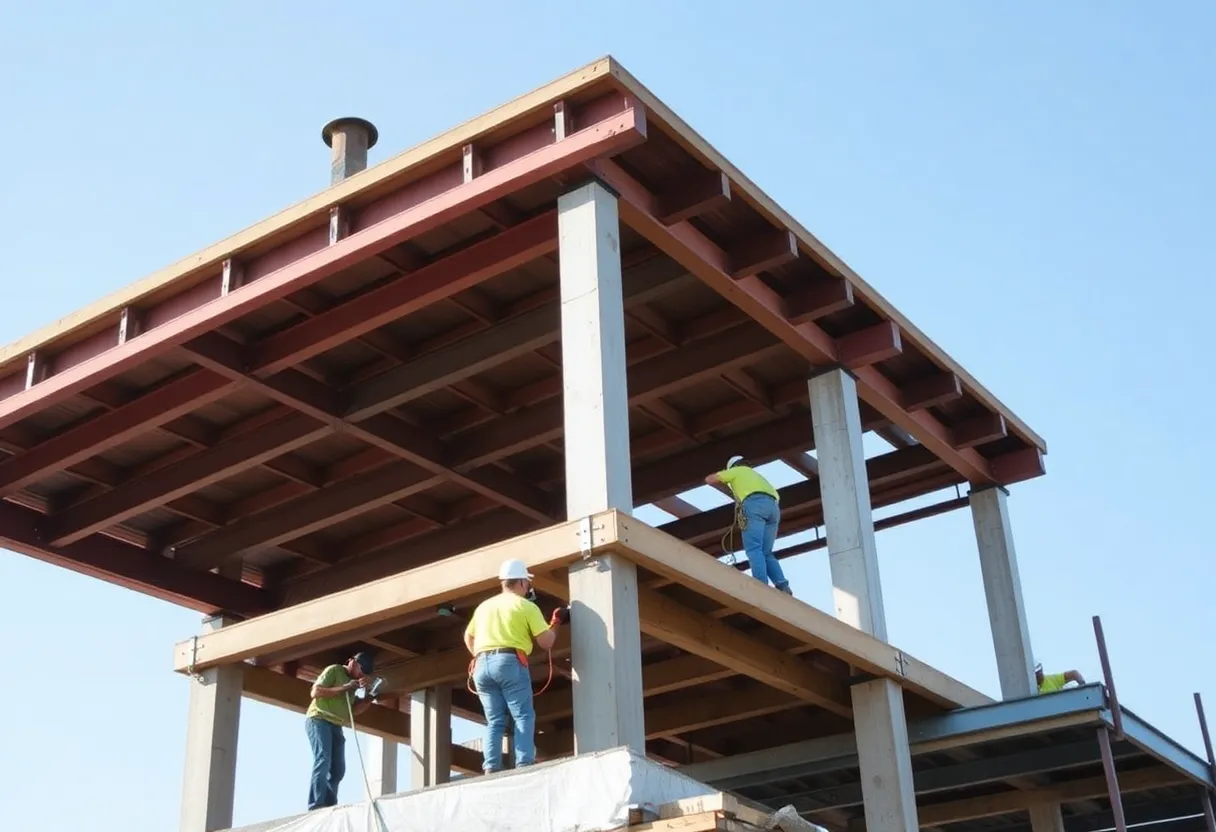News Summary
The housing crisis in Canada and the U.S. is worsening as outdated systems exacerbate challenges faced by developers amidst rising costs. Despite a decline in prices, potential homebuyers remain hesitant due to economic instability and high tariffs impacting construction. Canada requires a significant increase in housing production, while the U.S. faces a critical shortfall. Innovations like prefabrication methods may offer solutions, and reusing meanwhile spaces can keep communities engaged during construction delays. Addressing these issues is vital for future housing availability.
Housing Crisis in Canada and the U.S. Continues Amidst Outdated Systems and Escalating Costs
The housing crisis affecting Canada and the U.S. is deepening due not only to rising costs but also to outdated systems that complicate responses to demand. Developers face numerous challenges including economic instability and rising tariffs that hinder construction efforts and contribute to job insecurity among potential homebuyers.
Current Market Conditions and Price Trends
Recent data indicates a decline in housing prices: in Canada, prices fell by 3.7% year-over-year according to March figures from the Canadian Real Estate Association. In the U.S., the drop was slightly higher at 3.9% as reported by the National Association of Realtors. This price reduction has not necessarily translated into increased buyer confidence. Many potential homeowners remain hesitant to commit to purchases, largely due to fears about tariffs, job security, and ongoing economic uncertainty.
Challenges in Housing Supply
The pressing need for housing is evident. Canada requires a doubling of housing production to meet a target of adequate housing by 2030, with the Canada Mortgage and Housing Corporation estimating a shortfall of 3.5 million housing units. This translates to about 500,000 homes needing construction annually, while current production hovers around only half of that number. The U.S. faces an even starker reality, with an estimated shortfall of 4.5 million units.
Labor Market and Construction Needs
The labor landscape for construction is also undergoing a transformation. The U.S. alone needs an additional 439,000 construction workers this year, and continual demand is projected. In Canada, approximately 22% of residential trades workers are expected to retire by 2033, further exacerbating existing labor shortages. Simply relying on immigration to address these gaps is not sufficient; productivity improvements are necessary to meet demands.
Impact of Tariffs on Costs
Among the multitude of factors affecting housing prices, tariffs play a significant role. With around 30% of lumber used in U.S. homes being imported, suppliers may need to raise prices between 10% and 20% in response to these tariffs. Such price increases further strain the already stressed construction margins and may lead to a wave of permit cancellations and potential layoffs. Canada appears to be in a slightly better position to manage these challenges, as it is somewhat insulated from the most severe lumber tariffs.
Innovations and Alternatives in Housing Production
To boost housing production, the construction industry must embrace innovation. Traditional delivery systems in housing construction are falling behind compared to other sectors. There is a growing recognition that prefabrication and modular construction methods may offer promising solutions. The global market for prefabricated wood building systems is expected to reach $35 billion by 2029, growing at an annual rate of 5.5%. Using prefabricated mass timber construction is not only cheaper than concrete for mid-rise buildings but may also offer Canada a competitive advantage.
Utilizing Meanwhile Spaces
Developers are encouraged to think creatively about utilizing “meanwhile spaces” during construction delays. These can be repurposed for temporary uses such as pop-up retail or community markets—activities that engage local residents while offsetting carrying costs of the project. This approach maintains economic activity and provides low-barrier job opportunities, which are increasingly important given current unemployment rates—currently 7% in Canada and projected to reach 5.5% in the U.S. later this year.
The Way Forward
Ultimately, housing must be viewed as essential infrastructure, requiring a shift in how it is produced and delivered. Adopting engineered supply models and fostering strategic partnerships and supply chain alliances could significantly improve future housing availability. Manufacturers and developers alike need to focus on adapting their approaches to meet evolving demands while curtailing the compounding effects of outdated systems and heightened costs.
Deeper Dive: News & Info About This Topic
Additional Resources
- RSM US: Solving the Housing Crisis with New Construction Methods
- Wikipedia: Housing Crisis
- The Guardian: Democrats, Trump and Tariffs on the Housing Shortage
- Google Search: Housing Market Crisis
- A Wealth of Common Sense: The U.S. Housing Market vs. the Australian Housing Market
- Encyclopedia Britannica: Real Estate
- Newsweek: Donald Trump’s Silence on the U.S. Housing Crisis
- Google News: Canadian Housing Market
- NerdWallet: Canada Housing Market Crash
- Google Scholar: Housing Affordability
Author: Construction FL News
The FLORIDA STAFF WRITER represents the experienced team at constructionflnews.com, your go-to source for actionable local news and information in Florida and beyond. Specializing in "news you can use," we cover essential topics like product reviews for personal and business needs, local business directories, politics, real estate trends, neighborhood insights, and state news affecting the area—with deep expertise drawn from years of dedicated reporting and strong community input, including local press releases and business updates. We deliver top reporting on high-value events such as the Florida Build Expo, major infrastructure projects, and advancements in construction technology showcases. Our coverage extends to key organizations like the Associated Builders and Contractors of Florida and the Florida Home Builders Association, plus leading businesses in construction and legal services that power the local economy such as CMiC Global and Shutts & Bowen LLP. As part of the broader network, including constructioncanews.com, constructionnynews.com, and constructiontxnews.com, we provide comprehensive, credible insights into the dynamic construction landscape across multiple states.





